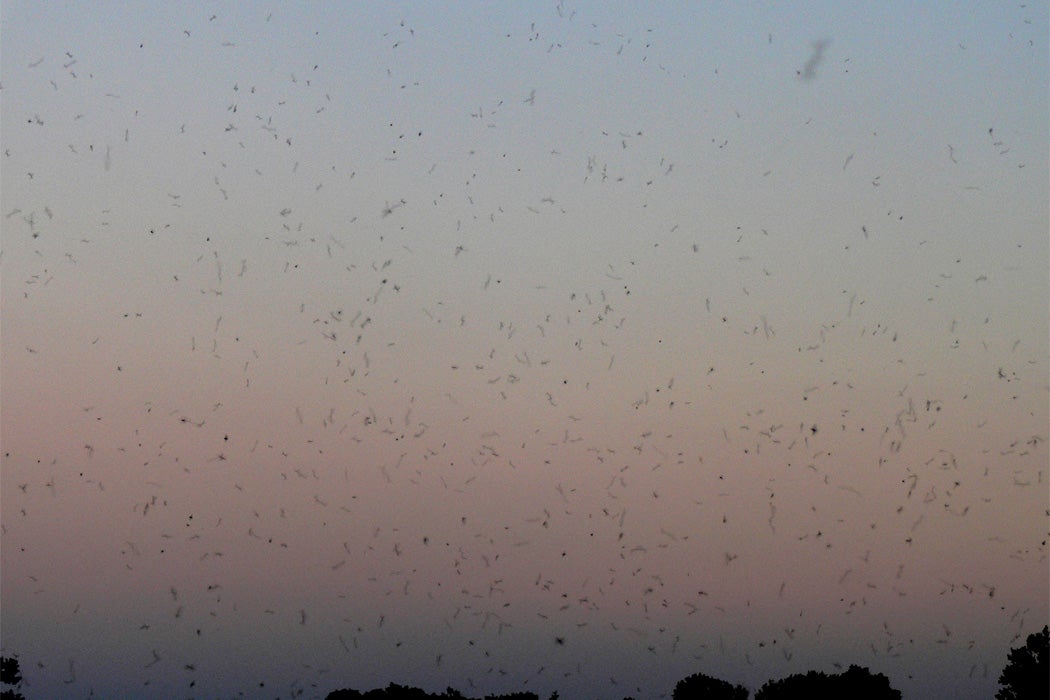Fresh air? More like an incredible mix of inorganic and organic matter jostling around in a windy hurlyburly. The air we breathe is full of dust and pollution, of course, but also life: microbes, algae, fungi, insects—and lots and lots of little spiders ballooning out on their silk parachutes.
The scientist Lyall Watson’s book Heaven’s Breath: A Natural History of the Wind, is an encyclopedic tour through all the stuff in the air we breathe. We know we breathe pollen and it makes us sneeze, but how often do we think about the details? Some ten thousand plants use the air to reproduce. Can they help it if our immune systems get in the way of their wind-tossed sex? And what about the rain? The drops may have coalesced around dust kicked up half way around the world, or around microbes stirred up from the soil somewhere far, far away.
“Much like the plankton within the ocean, the air overhead is teeming with microorganisms—aeroplankton swept up from the surface,” writes NASA microbiologist David J. Smith. He says that the study of these airborne microbes has really only taken off in this century as researchers have “figured out how to efficiently collect samples and employ modern molecular methods.”
“It’s now understood,” Smith writes, “that even dead cells can play a functional role in weather and climate as cloud and ice condensation nuclei.” There are also, unsurprisingly, living microbes adrift in the air. While some of these are pathogenic, they shouldn’t be the cause for too much alarm. That said, it’s interesting to note the origins of the word influenza, which postulated that disease fell down from the sky.
Then there are mushrooms. The fruiting bodies seen above ground are bearers of reproductive spores. These spores are released into the air to waft hither and yon. Biochemist Janine Fröhlich-Nowoisky and her co-authors write, “Fungal spores and other biological particles can account for large proportions of aerosol particle mass in pristine rainforest air as well as in rural and urban environments.” These spores act as nuclei for water droplet and ice formation and “influence precipitation patterns and the Earth’s energy budget.” They’re also “major pathogens or allergens for humans, animals, and plants, and air is their primary medium for their dispersal.”
Weekly Newsletter
So the weather is affected by all these particles. The weather also affects them: “temperature, relative humidity, rainfall, wind velocity,” are the most important factors determining algal diversity in the air, write botanist Naveen K. Sharma and his co-authors. They found thirty-four airborne algal genera, dominated by cyanobacteria, floating about in their study.
Something to think about (or not) the next time you inhale.







